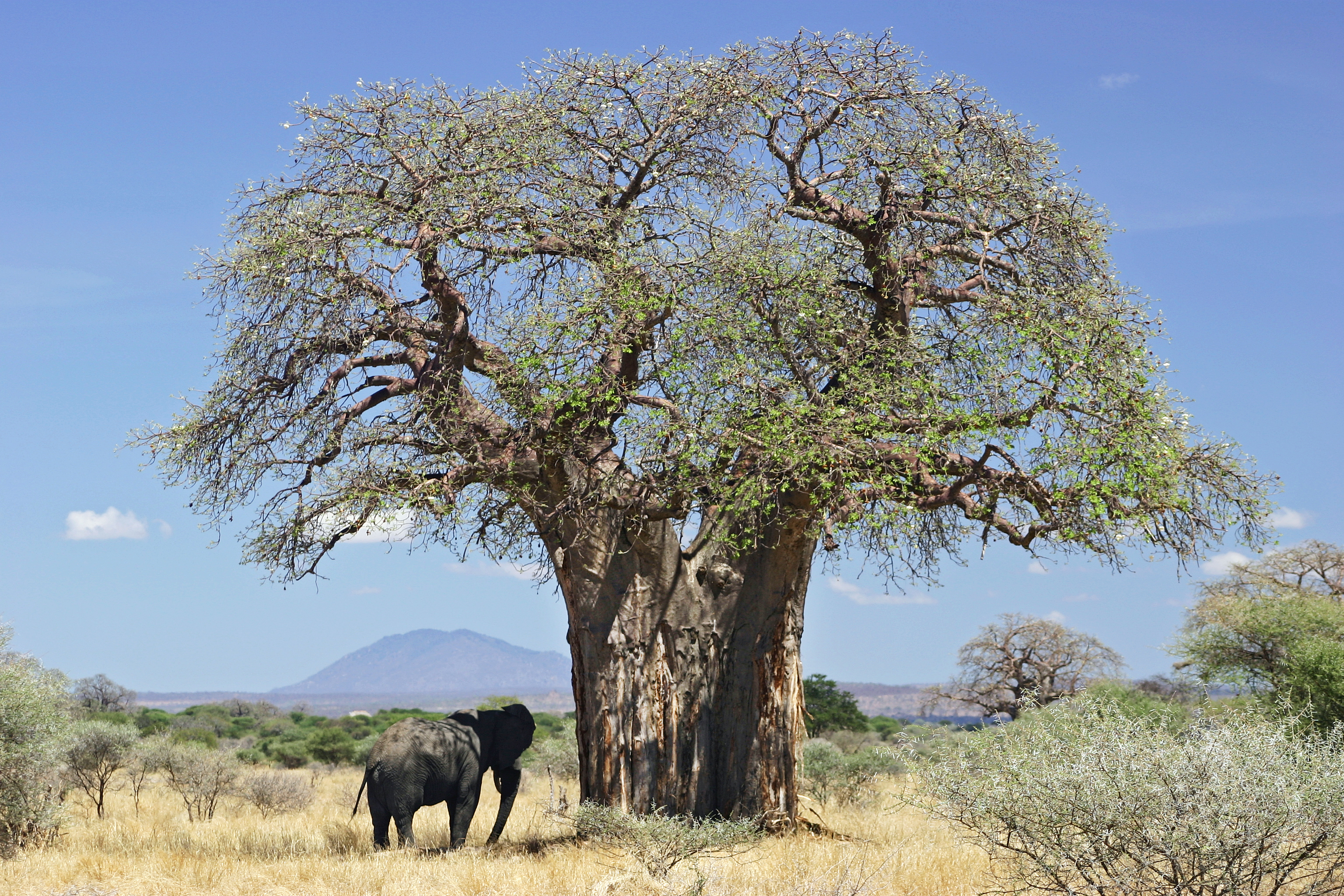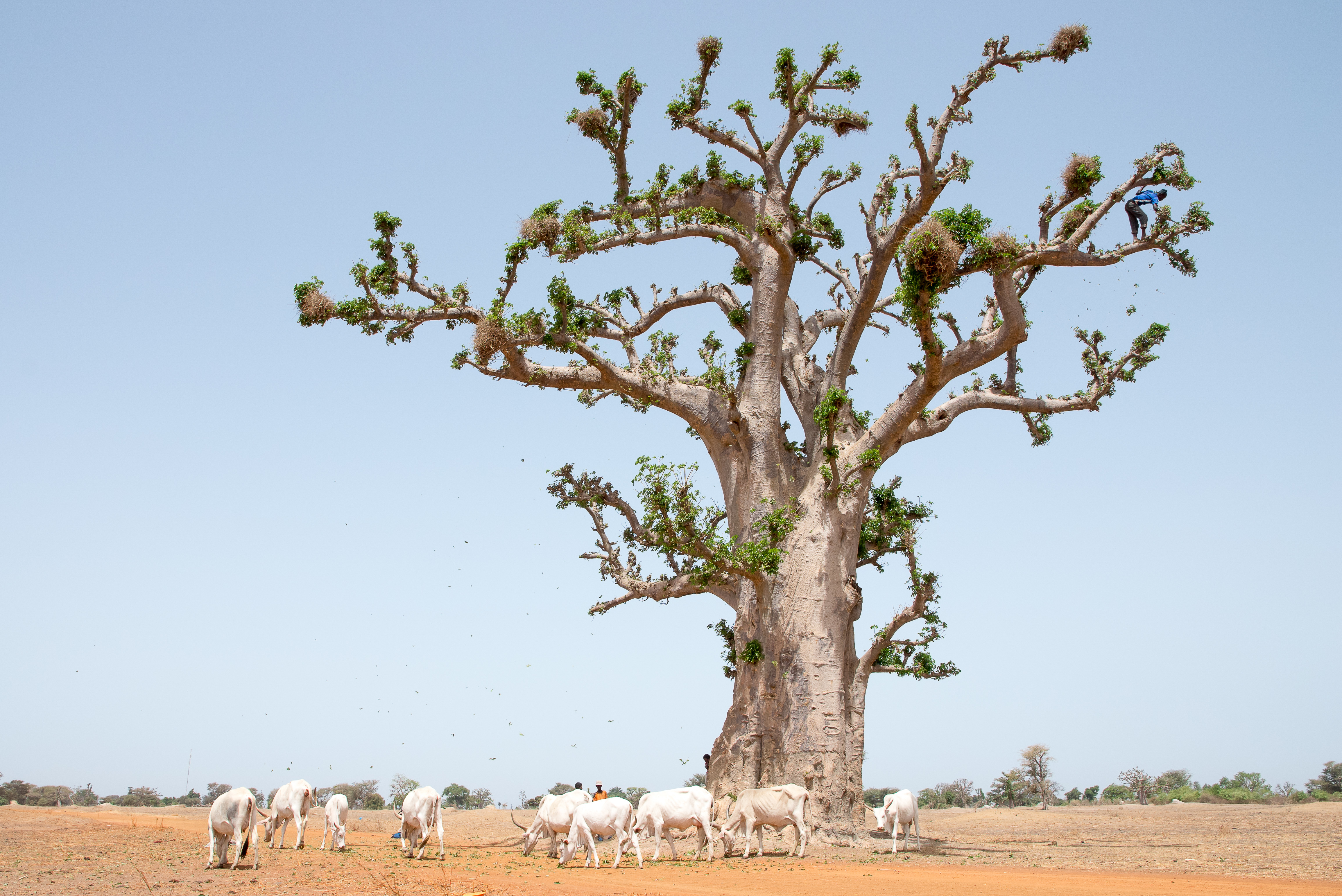|
Gbele Resource Centre
The Gbele Resource Centre or Gbele Game Production Reserve is one of the lesser known game reserves in Ghana. It is located in the Sissala West, Sissala East Municipal and Daffiama Bussie Issa districts of the Upper West Region The reserve is the fourth largest in Ghana. The nearest town is Tumu, capital of the Sissala East Municipal District which is 17 kilometres to the north. A total of 176 species of birds have been recorded in the reserve. The staff in the reserve are aware of an additional 18 species. The reserve contains antelope, hartebeest, bushbuck, waterbuck, savannah duikers and warthogs, baboon, patas, green monkey among others. There are about 190 species of birds as well. There are nature hikes provided as well. About 30 kilometres to the north of the centre is the Gwollu Defence Wall. Location The Gbele Resource Centre is located to the northeast of Wa, capital of the Upper West Region. To the west is Nadowli, Jirapa and Lawra. To the north is Nandom and Hami ... [...More Info...] [...Related Items...] OR: [Wikipedia] [Google] [Baidu] |
Upper West Region
The Upper West Region of Ghana is located in the north-western corner of Ghana and is bordered by Upper East region to the east, Northern region to the south, and Burkina Faso to the west and north. The Upper West regional capital and largest settlement is Wa. The Upper West was created by the then Head of State, Flight-Lieutenant Jerry Rawlings in 1983 under the Provisional National Defense Council (PNDC) military regime. The area was carved out of the former Upper Region, which is now the Upper East Region. For about thirty-five years, it remained the youngest region of Ghana until 2018 when six more regions were created by the Nana Addo Dankwa Akufo-Addo government; hence increasing the total number of administrative regions in the country to sixteen. Geography and climate Location and size The Upper West Region is one of the 16 regions of Ghana. It is located at the North Western corner of Ghana with latitude 9.8°- 11.O° North and longitude 1.6°- 3.0 West, bounded to Burk ... [...More Info...] [...Related Items...] OR: [Wikipedia] [Google] [Baidu] |
Adansonia Digitata
''Adansonia digitata'', the African baobab, is the most widespread tree species of the genus ''Adansonia'', the baobabs, and is native to the African continent and the southern Arabian Peninsula (Yemen, Oman). These are long-lived pachycauls; radiocarbon dating has shown some individuals to be over 2,000 years old. They are typically found in dry, hot savannas of sub-Saharan Africa, where they dominate the landscape and reveal the presence of a watercourse from afar. They have traditionally been valued as sources of food, water, health remedies or places of shelter and are a key food source for many animals. They are steeped in legend and superstition. In recent years, many of the largest, oldest trees have died, possibly due to climate change. Common names for the baobab include monkey-bread tree, upside-down tree, and cream of tartar tree. Description African baobabs are trees that often grow as solitary individuals, and are large and distinctive elements of savanna or scrubla ... [...More Info...] [...Related Items...] OR: [Wikipedia] [Google] [Baidu] |
Willcocks's Honeyguide
Willcocks's honeyguide (''Indicator willcocksi'') is a species of bird in the family Indicatoridae. It is found mainly throughout the African tropical rainforest. The common name and Latin binomial commemorate the General Sir James Willcocks General Sir James Willcocks, (1 April 1857 – 18 December 1926) was a British Army officer who spent most of his career in India and Africa and held high command during the First World War. Early life and education Willcocks was born in Bara .... References Willcocks's honeyguide Birds of the African tropical rainforest Willcocks's honeyguide Taxonomy articles created by Polbot {{Piciformes-stub ... [...More Info...] [...Related Items...] OR: [Wikipedia] [Google] [Baidu] |
Violet Turaco
The violet turaco, also known as the violaceous plantain eater (''Musophaga violacea''), is a large turaco, a group of African otidimorphae. Characteristics These are unmistakable birds, but shy and often inconspicuous in the treetops. They are approximately long, including a long tail and a bill. They boast a winglength of and weigh approximately 360 g. The plumage is glossy violet, except for the yellow forehead, chestnut crown and white ear coverts; the bill is thick and red. In flight, the violet turaco's crimson primary flight feathers contrast with the violet plumage. The red colour in the wings is typical of turacos. Habitat It is resident in West Africa, and has an extremely large range from Senegal through to the Nigeria, with an isolated population in Chad and Central African Republic. It occurs in tropical savannas, wetlands, woodlands and forests. Diet Diet consists of fruit, and they are quite partial to figs, but they will also eat leaves, buds, flowers, insect ... [...More Info...] [...Related Items...] OR: [Wikipedia] [Google] [Baidu] |
Spotted Thick-knee
The spotted thick-knee (''Burhinus capensis''), also known as the spotted dikkop or Cape thick-knee, is a wader in the family Stone-curlew, Burhinidae. It is native to tropical regions of central and southern Africa. Description The spotted thick-knee, which can reach up to in height, has long legs and brown-and-white speckled plumage which provides camouflage, making it difficult to spot the bird in the grasslands and savannas where it roams. Its head is large and round with a prominent yellow eye and a short, stout beak. When in flight or standing in a characteristic position with its wings raised, it shows a striking contrasting pattern. Its legs are long and yellow and the tibiotarsal joint is expanded, giving it the name "thick-knee". Behaviour file:Burhinus capensis, roep 30s, 2022-09-20 02h12, Pretoria, a.mp3, left, Calling at night in a suburban area The spotted thick-knee is nocturnal and squats on the ground during the daytime, making it difficult to spot. It hunts exc ... [...More Info...] [...Related Items...] OR: [Wikipedia] [Google] [Baidu] |
Red-throated Bee-eater
The red-throated bee-eater (''Merops bulocki'') is a species of bird in the family Meropidae. This species is found in tropical Africa, in Benin, Burkina Faso, Cameroon, Central African Republic, Chad, Democratic Republic of the Congo, Ivory Coast, Ethiopia, Gambia, Ghana, Guinea, Guinea-Bissau, Mali, Mauritania, Niger, Nigeria, Senegal, Sierra Leone, Sudan, Togo, and Uganda. It has a wide range and large total population, and the International Union for Conservation of Nature has assessed its conservation status as being of "least concern A least-concern species is a species that has been categorized by the International Union for Conservation of Nature (IUCN) as evaluated as not being a focus of species conservation because the specific species is still plentiful in the wild. T ...". Description The adult red-throated bee eater grows to about in length with a moderately long tail but no streamers. The upper parts are green and the red chin and throat are distinctive, thoug ... [...More Info...] [...Related Items...] OR: [Wikipedia] [Google] [Baidu] |
Northern Carmine Bee-eater
The northern carmine bee-eater (''Merops nubicus'') is a brightly-coloured bird in the bee-eater family, Meropidae. It is found across northern tropical Africa, from Senegal eastwards to Somalia, Ethiopia and Kenya. It was formerly considered to be conspecific with the southern carmine bee-eater which has a carmine coloured throat rather than the blue throat of the northern species. Taxonomy The northern carmine bee-eater was formally described in 1788 by the German naturalist Johann Friedrich Gmelin in his revised and expanded edition of Carl Linnaeus's ''Systema Naturae''. He placed it with the other bee-eaters in the genus ''Merops'' and coined the binomial name ''Merops nubicus''. Gmelin based his description on "Le guépier rouge à tête bleu" or "Guépier de Nubie" that had been described and illustrated in 1779 by French polymath Comte de Buffon in his multi-volume book ''Histoire Naturelle des Oiseaux''. Buffon had been provided with a picture drawn by the Scottish trave ... [...More Info...] [...Related Items...] OR: [Wikipedia] [Google] [Baidu] |
Gambaga Flycatcher
The Gambaga flycatcher (''Muscicapa gambagae'') is a species of bird in the family Muscicapidae. It is found in Burkina Faso, Cameroon, Central African Republic, Chad, Democratic Republic of the Congo, Ivory Coast, Djibouti, Ethiopia, Ghana, Guinea, Kenya, Liberia, Mali, Nigeria, Saudi Arabia, Somalia, Sudan, Togo, Uganda, and Yemen. Its natural habitats are subtropical or tropical dry forests, dry savanna, and subtropical or tropical dry shrubland. References Gambaga flycatcher Birds of Sub-Saharan Africa Birds of the Middle East Gambaga flycatcher The Gambaga flycatcher (''Muscicapa gambagae'') is a species of bird in the family Muscicapidae. It is found in Burkina Faso, Cameroon, Central African Republic, Chad, Democratic Republic of the Congo, Ivory Coast, Djibouti, Ethiopia, Ghana, Guin ... Taxonomy articles created by Polbot {{Muscicapidae-stub ... [...More Info...] [...Related Items...] OR: [Wikipedia] [Google] [Baidu] |
Dorst's Cisticola
Dorst's cisticola (''Cisticola guinea''), also known as the plaintive cisticola, is a bird in the family Cisticolidae. It occurs in West Africa and south of Lake Chad. Taxonomy and systematics of this bird are quite confusing. The Cisticolidae were formerly included in the "Old World warbler" assemblage and placed in the family Sylviidae. Dorst's cisticola was initially named ''Cisticola dorsti'', hence the common name. The name commemorates the French ornithologist Jean Dorst. Another very similar cisticola had been described some years earlier as a subspecies of the red-pate cisticola (''C. ruficeps''), and named ''C. r. guinea''. It was eventually discovered that these two taxa were one and the same, and that the song of these birds differs enough from the visually very similar red-pate cisticola for reproductive isolation. Thus, the newly discovered population is usually considered a good species, and the current scientific name is ''Cisticola guinea'', although other ta ... [...More Info...] [...Related Items...] OR: [Wikipedia] [Google] [Baidu] |
Black-headed Weaver
The black-headed weaver (''Ploceus melanocephalus''), also known as yellow-backed weaver, is a species of bird in the family Ploceidae. Taxonomy and systematics ''P. victoriae'' Ash, 1986 is now thought to be a hybrid between ''P. melanocephalus'' and '' P. castanops''. Description Breeding males have a black head and yellow nuchal collar, which is absent in the Juba and golden-backed weavers. It also differs from the latter species and village weaver by its plain, greenish mantle plumage. The pale yellow underpart plumage is suffused with a variable amount of chestnut. The female and non-breeding male lack the black head, and resemble a female masked weaver, except that they have dark eyes and a darker bill. Their buffy breast plumage also distinguishes them from non-breeding golden-backed weavers. Distribution and habitat It occurs in West, Central, and East Africa, but it has also been introduced to the Iberian Peninsula. It is found in savanna A savanna or sa ... [...More Info...] [...Related Items...] OR: [Wikipedia] [Google] [Baidu] |
Yellow-billed Oxpecker
The yellow-billed oxpecker (''Buphagus africanus'') is a passerine bird in the family Buphagidae. It was previously placed in the starling and myna family, Sturnidae. It is native to the savannah of Sub-Saharan Africa from Senegal east to Sudan. It is least common in the extreme east of its range (biology), range where it overlaps with the red-billed oxpecker, despite always dominating that species when feeding. Taxonomy In 1760 the French zoologist Mathurin Jacques Brisson included a description of the yellow-billed oxpecker in his ''Ornithologie'' based on a specimen collected in Senegal. He used the French name ''Le pique-boeuf'' and the Latin ''Buphagus''. The two stars (**) at the start of the section indicates that Brisson based his description on the examination of a specimen. Although Brisson coined Latin names, these do not conform to the binomial nomenclature, binomial system and are not recognised by the International Commission on Zoological Nomenclature. When in 1766 ... [...More Info...] [...Related Items...] OR: [Wikipedia] [Google] [Baidu] |


